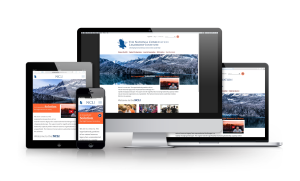
Usage rights and licensing can understandably be confusing for organizations to navigate. In our experience, many people simply are not aware that fonts, websites, illustrations, music and photos can all be subject to licensing and copyrights. Social media, with all of its content sharing, has helped foster a false impression that all media is up for grabs, which is just not the case—that’s where the right design firm comes in.
It’s no surprise that unanticipated situations can arise, catching the uninformed off guard.
Story 1: A client shared with us that they had purchased the rights to a photo, but only for one-time use. When their colleague mistakenly used the photo in another piece within the campaign, a major stock photography agency sued them for fraudulent use of an image.
An experienced design firm attuned to usage rights and the ownership of creative works can serve as a guide for their clients—asking them the right questions, providing them with a sense of awareness and simply anticipating potential problems before they arise. For example, if you’re providing artwork to your design firm, be sure your organization has secured the rights for the images and that you’ll be using them in a way that is consistent with your agreement. If you haven’t secured the rights, your firm can help you find similar, suitable artwork.
We know most firms do not intentionally set out to infringe on copyrights, but violations do occur.
Story 2: Another client experiencing functionality issues with their website decided to update it. When they requested a complete copy of the site from the company that had built it, the company refused. The client was stunned to learn that proprietary software coding was embedded throughout their website—effectively holding them hostage to that vendor or forcing them to rebuild it from scratch with someone else.
So how can your organization be proactive?
- Talk with your design firm about copyright issues
- Be aware enough to ask informed questions
- Choose a design firm that is transparent and will help protect your company
- Respect the usage rights of others’ work
- Spread the word—share what you learn within your organization
Have additional questions? We have the expertise to chart the right course for your organization. Visit us at deverdesigns.com or call 301-776-2812.
